7/31/2025
Perennials Section: Getting Beyond the Juggling Act
Katie Miller

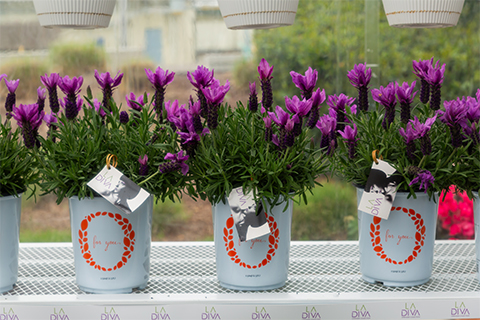
Success in the business of growing is rooted in balance—juggling costs, labor, weather and market timing. At the center of that balancing act is plant selection: having the right product available at just the right moment to capture consumers’ attention.
Lavender La Diva Berry Bountiful
In an effort to look beyond the traditional spring rush, perennials are emerging as a reliable option when it comes to seasonal color and giving the customer a sense of long-term value. This can be especially fruitful for growers targeting early season color sales.
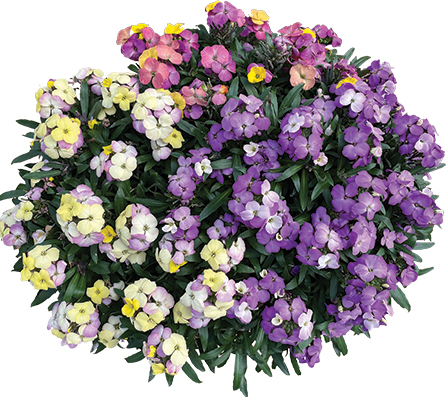 The path to early season success begins long before the first bloom. From the first stages of planning and seasonal forecasting to starting plants in the summer heat, transplanting into finished containers by September and managing through winter weather into February or even March, growers who plan ahead can reap the rewards of vibrant perennials at retail just as consumers begin to shake off winter’s chill.
The path to early season success begins long before the first bloom. From the first stages of planning and seasonal forecasting to starting plants in the summer heat, transplanting into finished containers by September and managing through winter weather into February or even March, growers who plan ahead can reap the rewards of vibrant perennials at retail just as consumers begin to shake off winter’s chill.
Erysimum WallArt Trio Mix
Many color growers kick off the early spring season with cool-weather annuals like pansy and Primula acaulis—but why stop there? Elevate your early spring program by adding perennial color that not only compliments traditional offerings, but also boost sell-through at a time when shipments can lag. Perennials bring unmatched consumer value with their staying power, making them an easy upsell for retailers looking to capture a higher price point. And in a season when most landscapes are still dormant, adding variety to the selection of color and texture is nothing short of inspiring.
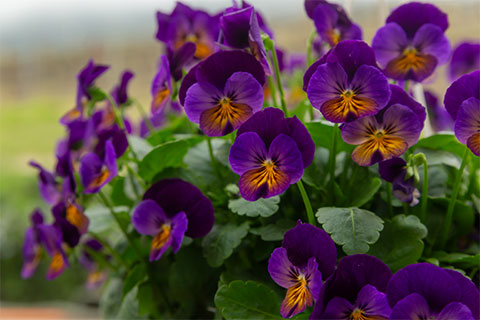
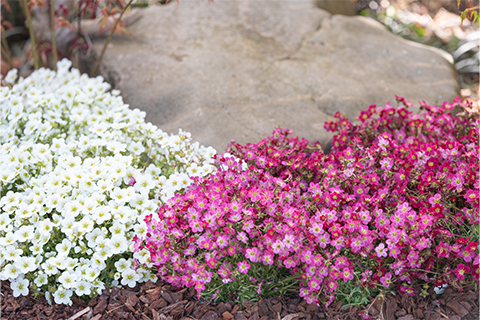 At Dümmen Orange, our perennial genetics are built for impact—especially in the early season. We focus on varieties that deliver bold, eye-catching color when consumers are craving it most, helping growers kick off the season strong with high-quality, retail-ready plants. Here are just a few of our must-have categories:
At Dümmen Orange, our perennial genetics are built for impact—especially in the early season. We focus on varieties that deliver bold, eye-catching color when consumers are craving it most, helping growers kick off the season strong with high-quality, retail-ready plants. Here are just a few of our must-have categories:
Viola Spring Morning Sunny Purple; Saxifraga Scenic Red
- Aubrieta Rock On series: Required vernalization to bloom, extremely cold-hardy plants that can bloom as early as February.
- Phlox subulata Spring series: Requires vernalization, 12 colors to choose from in the core series all bloom within seven days. Hardy groundcover during the rest of the season, ideal for full sun locations.
- Iberis White Shadow: Vernalization improves bloom count, White Shadow blooms later than other iberis, allowing for sales up to four weeks later.
- Saxifraga Scenic series: Required vernalization from bloom, delicate flowers in spring with four colors to choose. Evergreen groundcover for shade.
- Erysimum WallArt: Grow cool for the best habit, five colors and compact habit make these an easy choice for Easter programs.
- Lavandula stoechas La Diva Berry Series: Benefits from cool growth to maximize blooms. Extra-large flags in bold pinks and purples give these a WOW factor!
- Viola Spring Morning series: Grows well in cool conditions. This all-new series of perennial viola maximize flower power in the early days of spring well into the heat of summer before flushing with more color in the fall as nights cool off.
Start strong: Fall sets the stage for early season success
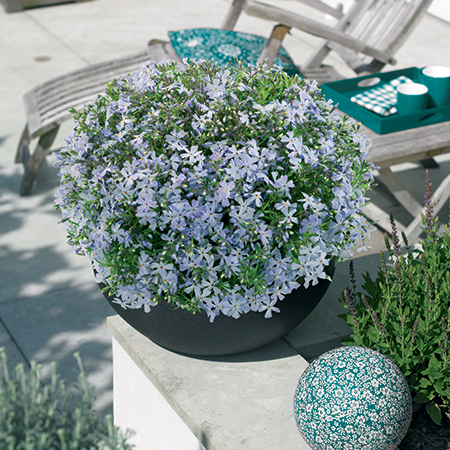 At Dümmen Orange, we know that great early season perennials start long before spring. The fall season is a pivotal starting point for overwintering crops that bloom early. The goal is to establish strong, healthy root systems that can withstand the winter conditions and help the plants perform in the earliest days of spring. September and October are the ideal time to transplant these crops from the rooted liner into the finished container. In order to get the flowers at the right time on crops requiring vernalization, a cold period of temperatures ranging from 35F and 45F (1C to 7C) is needed for six to eight weeks.
At Dümmen Orange, we know that great early season perennials start long before spring. The fall season is a pivotal starting point for overwintering crops that bloom early. The goal is to establish strong, healthy root systems that can withstand the winter conditions and help the plants perform in the earliest days of spring. September and October are the ideal time to transplant these crops from the rooted liner into the finished container. In order to get the flowers at the right time on crops requiring vernalization, a cold period of temperatures ranging from 35F and 45F (1C to 7C) is needed for six to eight weeks.
Phlox Spring Blue
Placement matters
After transplanting, placement is everything. It’s typical when overwintering finished perennials for vernalization to set them down pot tight in an open field or cold frame where they can be covered with frost cloth when needed, but allowed to go dormant. However, due to the planned sales dates for early season color it’s crucial to meet the cooling need, but also protect evergreen foliage from damage—be it excessive cold, moisture or disease. Having a growing space that can be heated if necessary and allow the grower to control the amount of water the crop is exposed to makes for a higher quality product when it’s time to deliver.
Right after transplant until temperatures drop is the key period for proper nutrition. In some cases, growers may opt for the use of a slow-release fertilizer in their soil mix to sustain the plant through rooting. As temperatures drop, so does plant activity—making them more vulnerable to excess water, which can lead to fungal infections, crown rot or root loss. Even under cover, dry-down cycles should be carefully managed to avoid oversaturation and to support nutrient uptake.
For crops that have satisfied their cold requirement, the earliest signs of spring begin—often in early February depending on region. As buds begin to form at this stage, nutritional needs begin to shift. As plants wake up, reintroducing fertilizer in a controlled manner supports strong, healthy growth. However, excessive nitrogen too early can lead to stretched plants with weak habits.
Retail-ready color
By late February and into March, the pressure is on. This is the window when early season perennials need to shine. Whether you're delivering to garden centers, mass merchants or direct-to-consumer markets, color and quality is king. Plants should be well-rooted, showing strong bud set, compact growth and clean foliage ready to burst into color as light levels increase. Dialing in irrigation and feeding at this stage supports flowering and sets your crop apart.
Our early season perennials offer more than just blooms—they offer opportunity. Dümmen Orange genetics bring together timing flexibility, market extension and consumer appeal in a competitive market that helps growers extend their season, meet shifting retail windows and deliver products consumers cannot resist. With strong planning and careful culture, you open the door to a colorful, high-value season. GT
Katie Miller is Regional Product Manager - Perennials for Dümmen Orange.